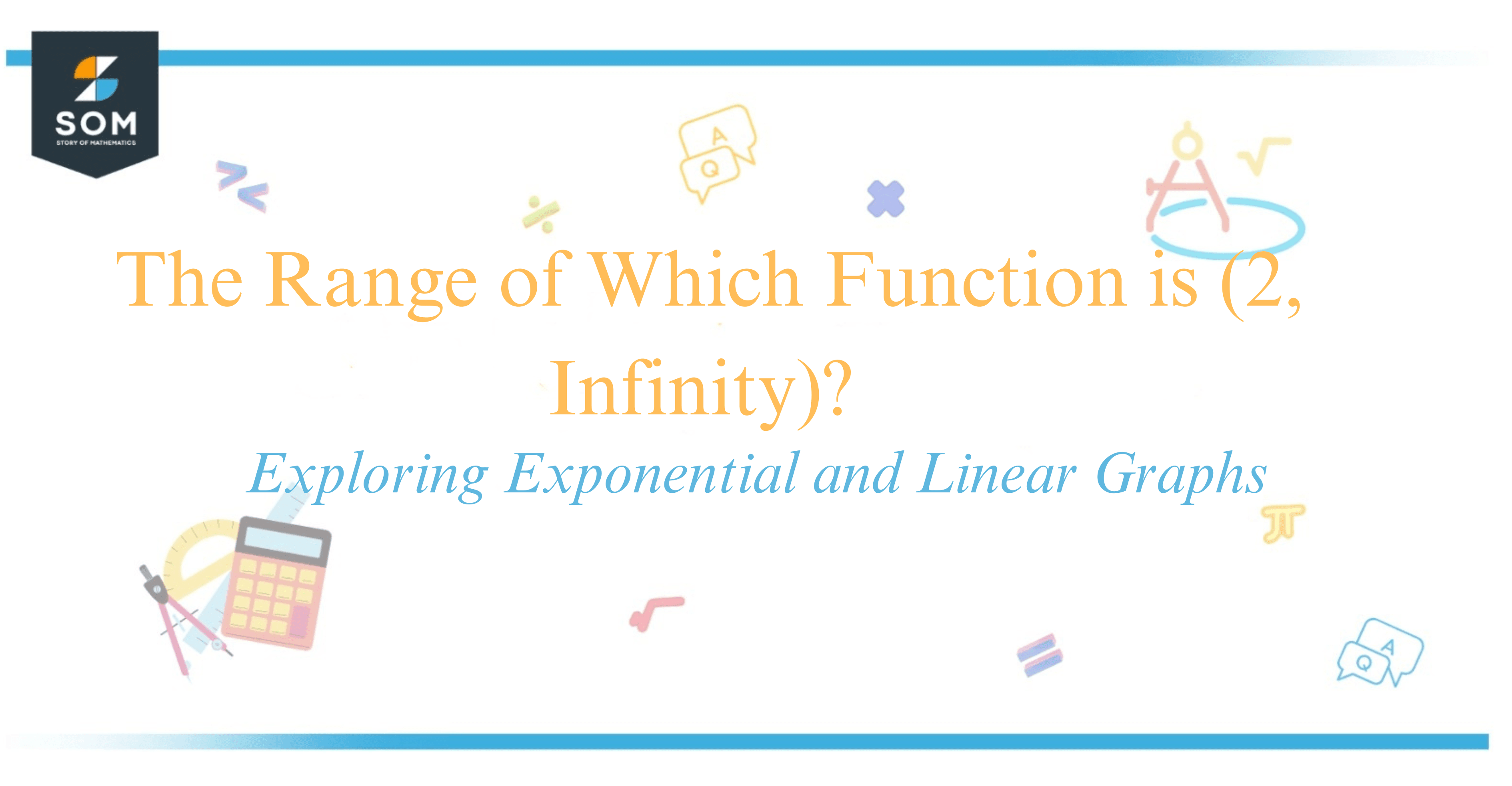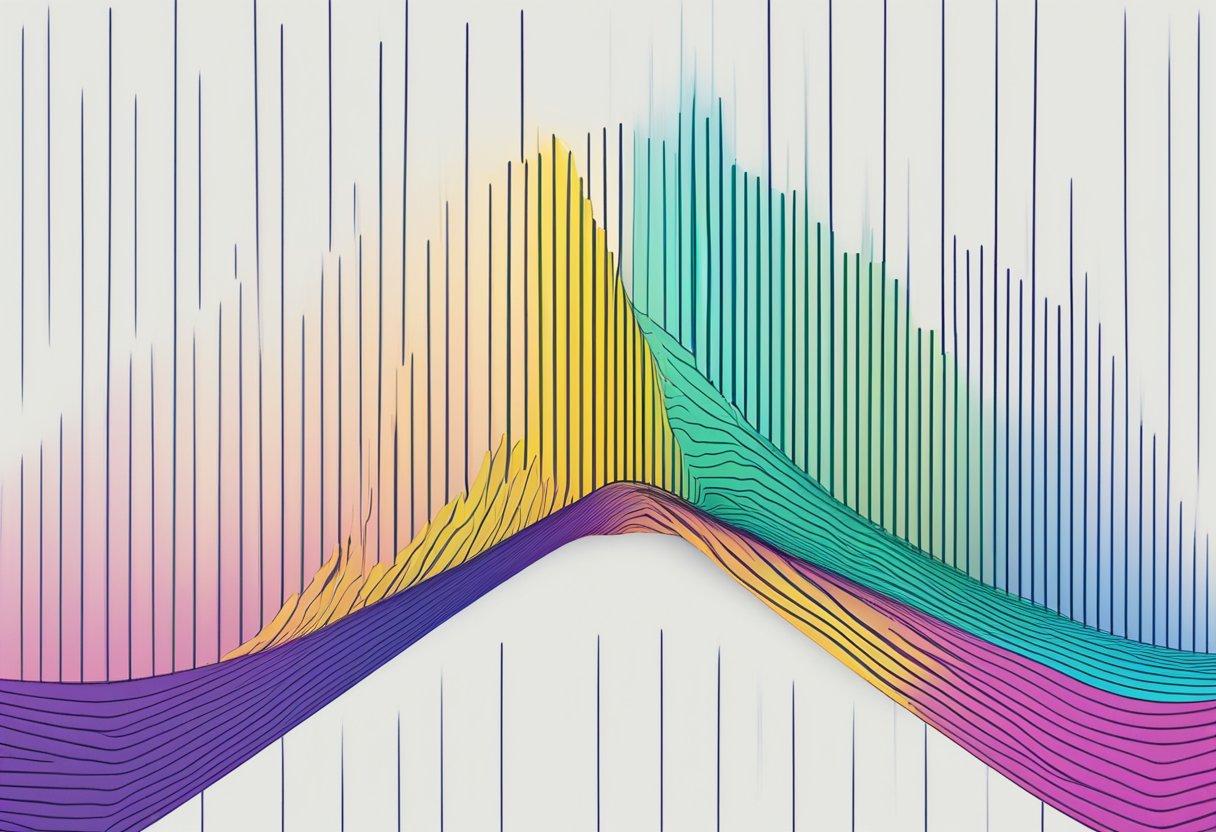
The range of a function represents all the possible output values it can produce, depending on the input values it receives. For the functions given, namely ( y = 2x ), ( y = 2(5x) ), ( y = 5x + 2 ), only the function ( y = 5x + 2 ) has a range of $(2, \infty) $.
This is because as ( x ) approaches infinity, the value of ( y ) will grow indefinitely, while the lowest value it can take is just above 2 when ( x ) is very close to zero.
Understanding the range of a function helps us visualize how a function behaves across the spectrum of real numbers and is particularly essential in fields such as engineering and the physical sciences, where real-world phenomena are modeled mathematically.
I always find joy in exploring how equations manifest in graphs – those seemingly simple lines and curves can tell us so much about the relationships they represent. Let’s go on a journey to decode these mathematical expressions together!
Understanding the Range of Functions
In this section, I’ll explain how to identify the range of a specific type of function, which is crucial for understanding how functions behave on an interval. Let’s dive into how this applies to finding a range that starts at (2) and extends to infinity.

Identifying the Range
To determine the range of a function, I look at the output values it can produce. The domain refers to all possible input values, usually real numbers, while the range consists of all possible outputs. Let’s take an example of the given functions:
- y = 2x
- y = 2(5x)
- y = 5x + 2
- $y = 5^x + 2$
By examining these functions, I can see that each one has a different structure, which affects its range. For linear functions like (y = 2x) and (y = 2(5x)), their ranges are all real numbers because they continue indefinitely in both the positive and negative directions.
However, when I look at the function (y = 5x + 2), if I’m not careful, I could easily overlook that this is still a linear function with an undefined range of infinity in both directions.
The positive or negative outcome depends on the value of (x), whether it’s positive or negative.
The function that fits the range of $(2, \infty)$ is $y = 5^x + 2$. It’s because this function is not linear; it’s an exponential function where $5^x$ is always positive, and since we’re adding (2), it shifts the graph up by (2) units.
This means for any real number value of (x), (y) will be greater than (2), approaching infinity but never touching (2), hence the interval $(2, \infty)$.

Let’s tabulate the function alongside its range for clarity:
| Function | Range |
|---|---|
| y = 2x | $(-\infty, \infty)$ |
| y = 2(5x) | $(-\infty, \infty)$ |
| y = 5x + 2 | $(-\infty, \infty)$ |
| $y = 5^x + 2$ | $(2, \infty)$ |
When solving for the range mathematically, I also check the graph. If I plotted $y = 5^x + 2$, the curve (not a parabola or cubic) would start at the point (0,2) and rise indefinitely as (x) increases.
The x-axis represents the domain and the (y)-values, given by the vertical axis, clearly show the range starting just above (2) and increasing without bound.
In algebra, knowing the range helps to understand the behavior of functions and solve problems that have restrictions on the output values.
Through learning to interpret these intervals, zero becomes a pivotal point because it can represent an undefined state in some functions or the boundary of an interval in others.
Conclusion
In exploring the various functions, I’ve found that the range of a function tells us the set of possible output values based on the input values it receives. When we talk about the range being $(2, \infty)$, we’re referring to all real numbers greater than 2, but not including 2 itself. Among the functions examined, $y = 2x$, $y = 2(5x)$, and $y = 5x + 2$, the one that clearly stands out is $y = 5x + 2$.
The function $y = 5x$ scaled vertically by a factor of 2 and then translated vertically upward by 2 units, yields $y = 5x + 2$.
This translation ensures that the smallest value of $y$ is just above 2 when $x$ approaches 0, and as $x$ increases, $y$ goes beyond all bounds, approaching infinity. Thus, the range of $y = 5x + 2$ is indeed $(2, \infty)$, adhering to the criteria.
My analysis confirms that this is the only function among the given options that satisfies the condition for the range. It is crucial to comprehend that linear transformations affect the range in predictable ways, which helps in deducing the correct function out of the given choices.
